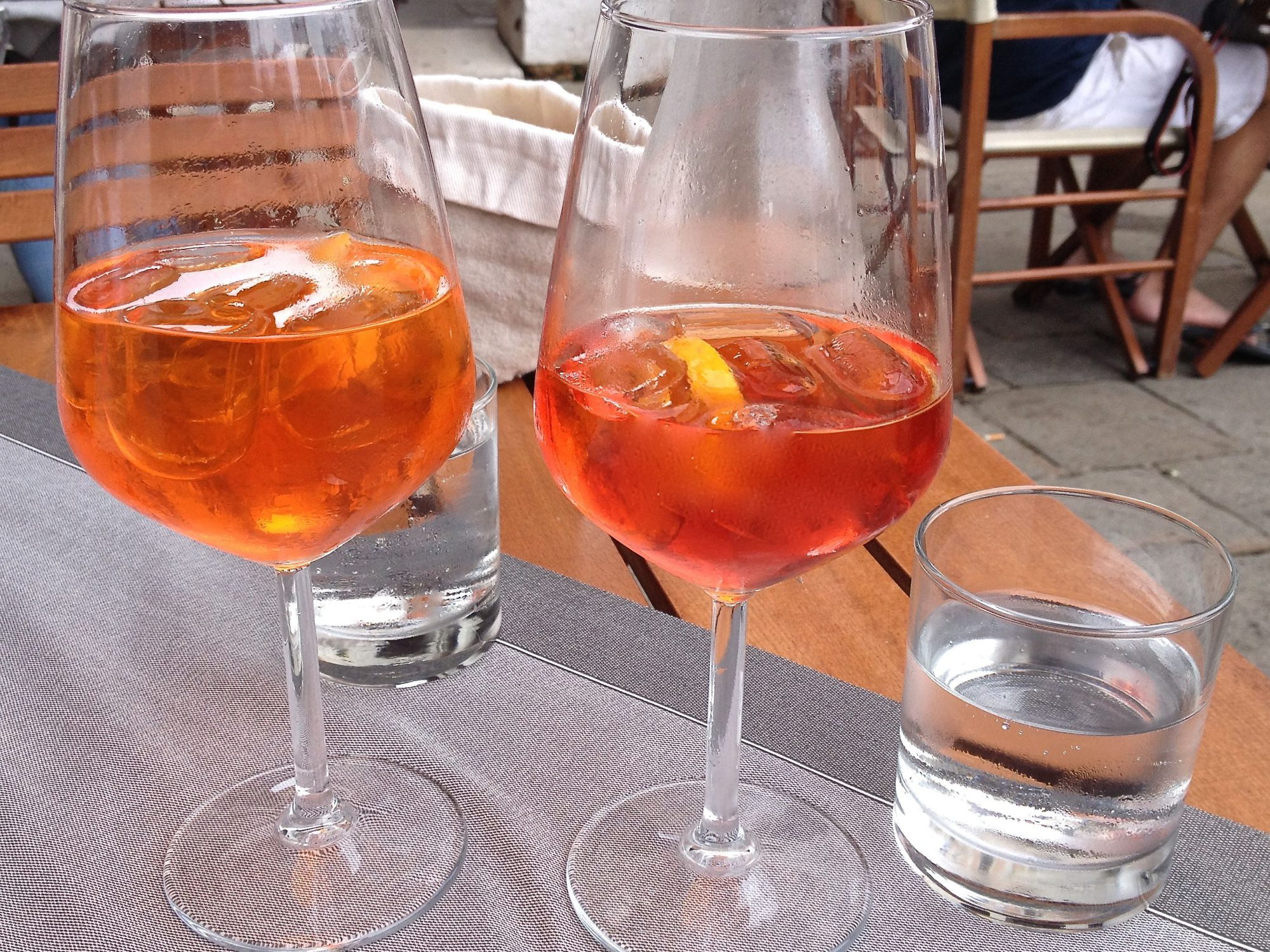Italy is world famous for its wine and regional cuisine. And there are few better ways to enjoy a sultry summer evening than over a plate of piping-hot pasta sipping on a deliciously crisp Frascati or Pinot Grigio. But if you go straight out for dinner you’ll be missing out on a quintessential element of la vita bella, as all self-respecting Italians start their evening with an aperitivo, or pre-dinner drink, to get their digestive juices flowing. So to help you choose from the drinks menu, here are the top 6 Italian drinks ordered by real Italians.
What is an aperitivo?
After a hot day at work, Italians like nothing more than to stop at their local bar for a traditional aperitivo and some light snacks. But this isn’t happy hour or an excuse to drink to oblivion. Aperitivo time, typically between 7pm and 9pm, serves three important digestive purposes. One, to allow Italians to relax, unwind and socialize after work. Two, to kick start their digestive metabolism and get the juices flowing with a light, dry or bitter tonic with some “bite” to it (rather than a sickly sweet sugary cocktail) to work up an appetite before dinner. And three, to gently and slowly open the stomach and prepare it for the typically 4 course Italian dinner to come. Without an aperitivo to prepare the way, Italians believe they risk digestion and indigestion troubles, so be careful not to skip this wonderfully Italian custom.
What are the classic Italian drinks?
Vermouth from Turin
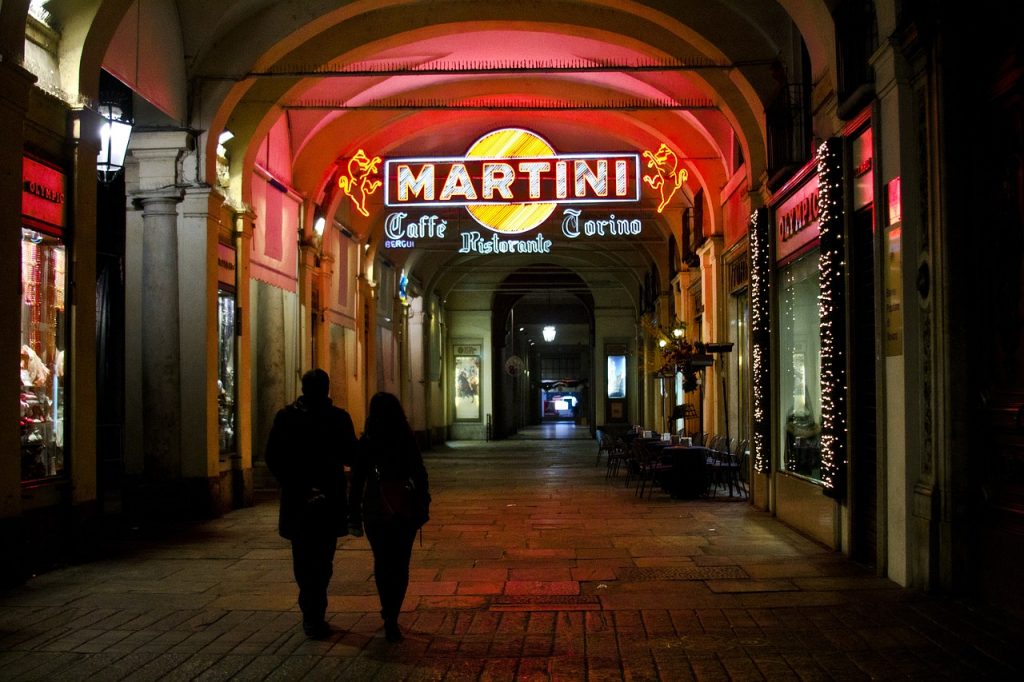
Many believe that the original aperitivo and origin of all aperitivi is Vermouth, an aromatic fortified wine created in Turin.
One of the oldest vermouths dates back to 1757 when two herbalist brothers, Giovanni Giacomo and Carlo Stefano Cinzano, created vermouth rosso in Turin. Initially marketed as a medicinal tonic, as many Italian drinks were, the fortified wine is flavored by over 30 aromatic plants from the Italian Alps overlooking the city. Ingredients include herbs, barks and roots such as juniper, gentian and coriander. And Vermouth’s name is derived from the German word for Wormwood, Wermut, another of its key botanical constituents. The rest of the ingredients include a white wine base, cane sugar and a small amount of distilled spirit, often brandy, to pump up the alcoholic strength, although exact recipes are closely guarded secrets.
Vermouth quickly gained in popularity thanks to its deliciously intoxicating qualities. Nineteenth century barkeeps started using it as a mixer in cocktails including the Martini, the Rob Roy and the Manhatten. And Vermouth is also a key ingredient of another classic, Italian drink, the Negroni, more of which in a minute.
Today Vermouth is made all over the world but classic Italian brands include the original Cinzano, Carpano and Martini & Rosso. So if you fancy a tipple once popular with lady’s man Giacomo Casanova, why not give the original Vermouth aperitivo a go.
Campari from Novara
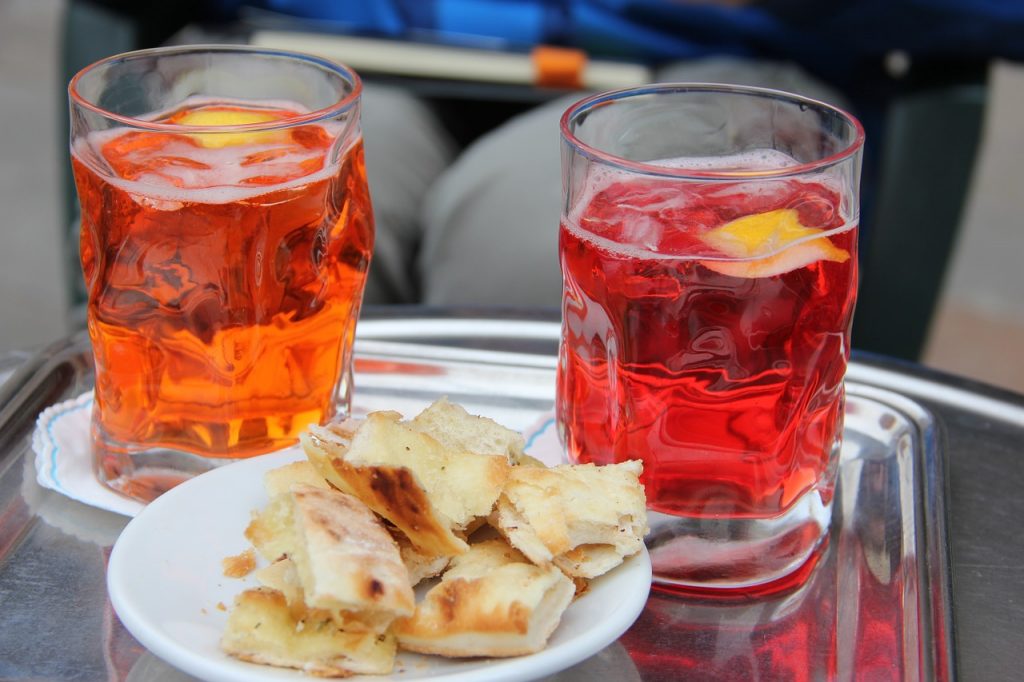
Campari, a red herbal liqueur, was first sold in Italy by Gaspare Campari in the 1800s. Born in Cassolnovo, in the province of Novara, Lombardy, Campari was the tenth child of a farmer and was serving in the local Bar Basso by the time he was 14, selling bitter-style aperitifs. By 1860 he’d formulated the recipe for Campari bitters using around 60 ingredients including herbs, fruit, spices and alcohol. The drink also took its distinctive ruby red color from crushed cochineal insects, although that practice eventually stopped in 2006.
Drinkers quickly took to Campari served from Gaspare’s bar in front of Milan’s enormous Gothic Duomo. His sons would go on to take over the business, taking Campari first to Nice and the glamorous French Riviera, then wider Europe and now exporting it to over 190 countries around the world.
Campari’s bitter taste can take a bit of getting used to but it is very popular, both in aperitivi or simply served with soda water or citrus juice, as a refreshing boost to the digestion. And today Campari, just like Vermouth, is a quintessential Italian drink and a key ingredient of our next aperitivo. I’ll have a Campari please!
Negroni from Florence
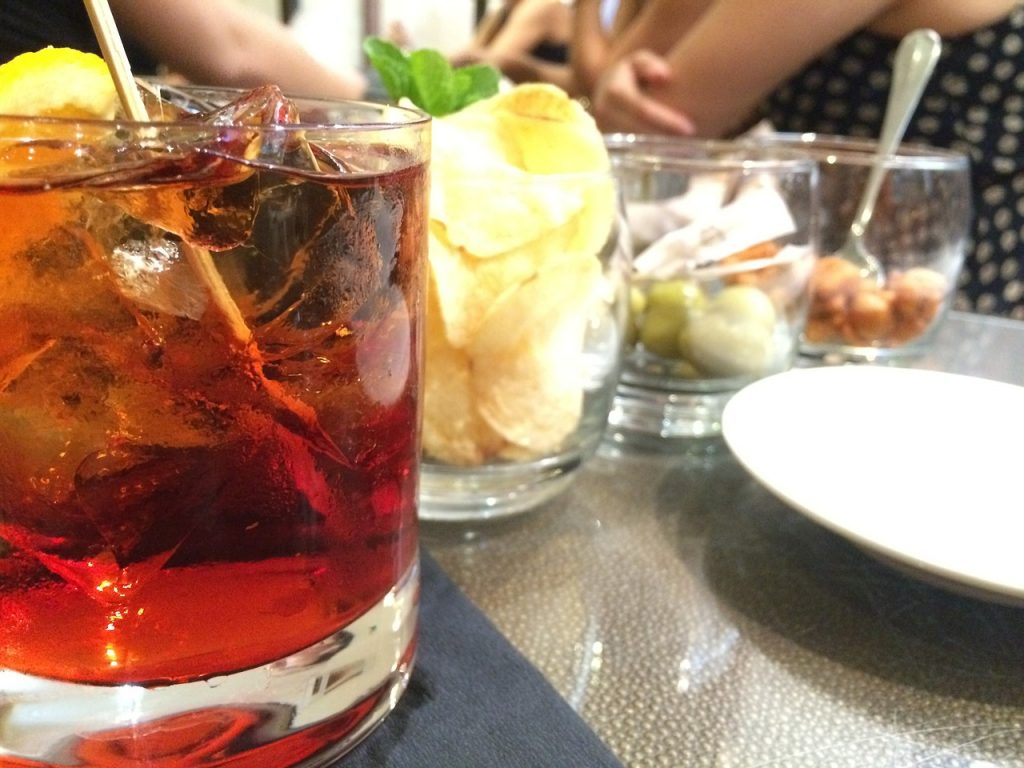
The Negroni is a cocktail made from one part sweet vermouth rosso, one part Campari and one part gin normally served over ice and garnished with a piece of flamed orange peel.
No-one’s quite sure how the Negroni originated but the most common tale is that it was created at Florence’s Caffe Casoni, in Via della Spada, in 1919. The story goes that a local aristocrat, traveler and regular at the bar, Count Camillo Negroni, fancied a kick to his usual tipple of Campari and Vermouth. So instead of topping it up with soda water to make an Americano, the barman Forsco Scarselli, added one part of London dry gin, changed the lemon garnish to a twist of orange and hey presto, the ruby red Negroni was born.
The new cocktail quickly spread around Turin and today the Negroni is drunk around the world, thanks in part to the Negroni family’s own distillery, set up in 1919, that still produces a ready-mixed version, the Antico Negroni.
So whether you’re standing at the bar of the Caffe Casoni, now known as Caffe Giacosa or locally as Caffe Cavalli, or perusing the drinks menu in a cocktail bar in downtown New York why not try Count Negroni’s sweet bitter aperitivo; it’s an acquired taste but a classic way to kick start your digestion before you dive into a large Italian meal.
Negroni Sbagliato from Milan
As with so many good cocktails, there are a number of variations on the Negroni, the best known of which is probably the Negroni Sbagliato, meaning erroneous or bungled Negroni, that came about purely by accident.
Aperitivo legend goes that the sbagliato was the result of a busy Bar Basso bartender in Milan, who simply picked up the wrong bottle when making a Negroni, accidentally substituting sparkling white wine for the gin. But it turned out to be a happy accident as the result was delicious. So instead of ordering a simple negroni, why not add a dash of Prosecco and try a sbagliato; it’s an excellent choice for an early evening aperitivo.
Prosecco from the Veneto
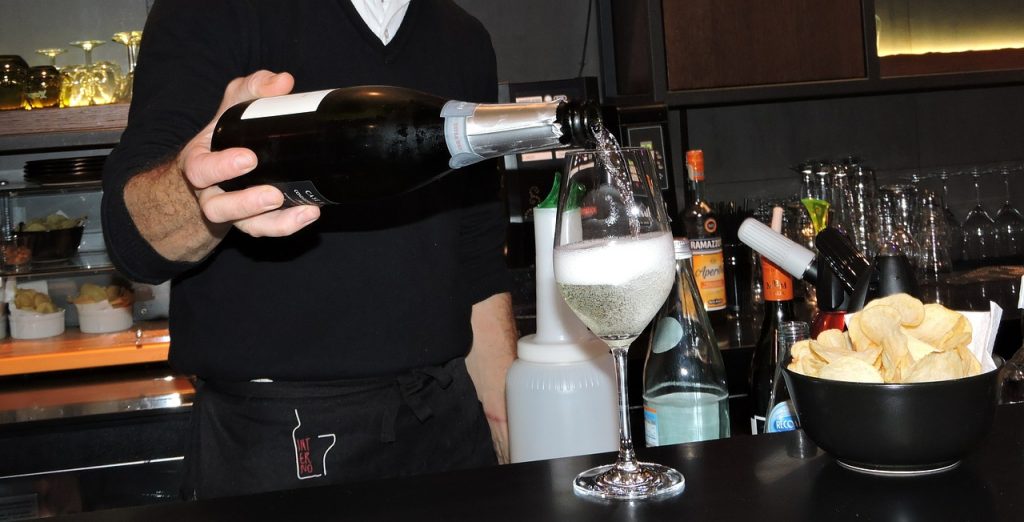
If you prefer a crisp, light sparkling wine then the Veneto region’s Prosecco is the ideal aperitivo and a favorite amongst Italian drinks.
The first recorded mention of the name prosecco dates back to the memoirs of Fynes Moryson, an English gentleman traveler, who had visited northern Italy as part of his Grand Tour in 1593. But the sparkling white wine may date back even further, to the days of ancient Rome and historian Pliny the Elder who apparently loved a glass of fizz for its medicinal qualities.
Today prosecco is produced across the northern Veneto and Friuli Venezia Giulia regions with the best prosecco superiore hailing from the hills between the Veneto towns of Conegliano and Valdobbiadene area north of Treviso.
Many restaurants will offer you a glass of the chilly fizz as you study the menu and for countless Italians it’s the first choice drink before heading for dinner. You can’t go far wrong with a few bubbles!
Aperol Spritz from Venice
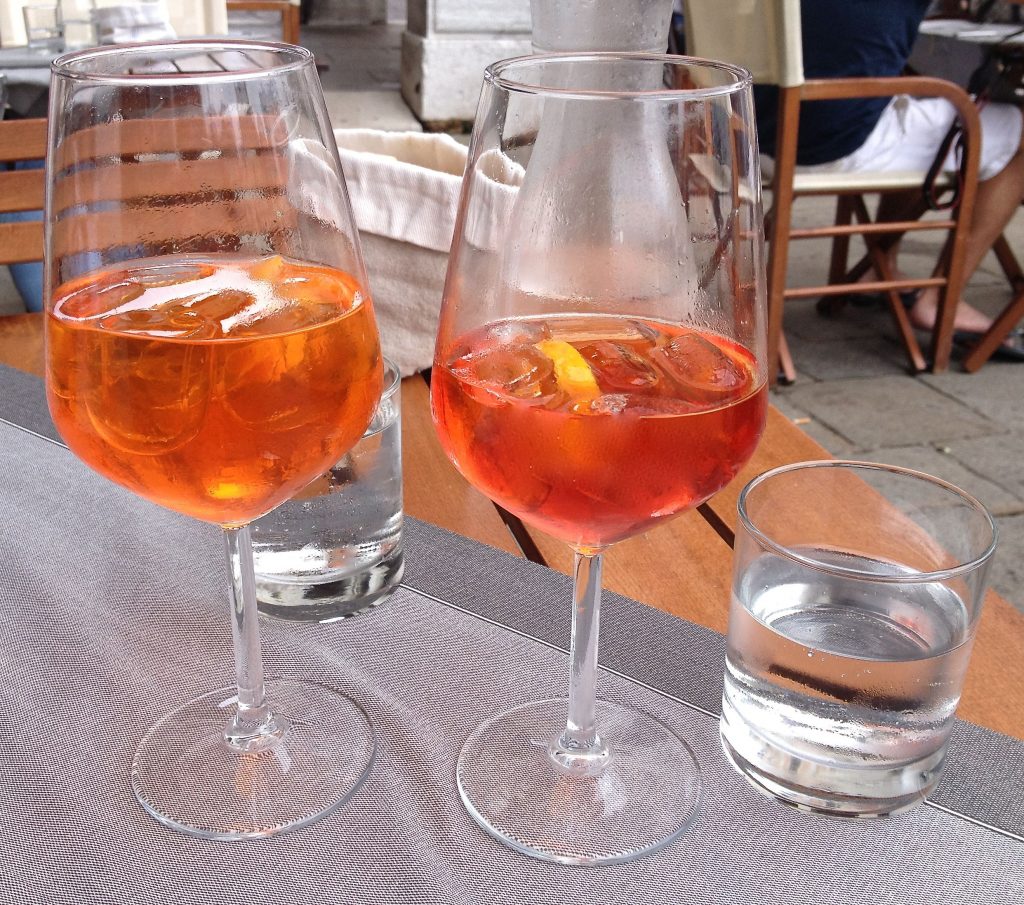
Also known as the Veneziano, Spritz Veneziano or simply a spritz, we have the Austro-Hungarians to thank for this aperitivo. Seemingly the Austrians occupying Venice at the beginning of the 1800s found Venetian wine too strong so diluted it with a spritzen or sprinkling of water to make it more drinkable. Over the years bitter herbal liqueurs were added to give the drink a bit of a kick. And then in 1920 the Barbieri brothers of Padua invented their Aperol bitter using orange, rhubarb and gentian and the neon-orange Aperol Spritz was born, made from 3 parts prosecco, 2 parts Aperol and 1 part soda water with a large green olive on a stick as a garnish.
Today Aperol spritz is one of the most commonly drunk aperitivi in Venice and around Italy. It’s the archetypal Venetian pre-dinner drink and an estimated quarter of a million are drunk every day in the watery city alone! And in the last ten years the Aperol spritz has enjoyed a stratospheric rise in international popularity as an Italian alternative to Pimms, rosé wine or other summer cocktails. But if you want to be truly Venetian, substitute the Aperol bitter for Select and enjoy this delight on the Grand Canal as the gondolas glide by.
Salute, Cin Cin, Cheers!
So if you’re planning a trip to Italy, make sure to leave time in your schedule to enjoy aperitivo time before dinner. It’s a great way to wind down after a long day sightseeing and to experience a little bit of Italian culture without spoiling your appetite. Plus there are plenty of drinks to choose from, just don’t go overboard! Salute, Cin Cin, Cheers!
What is your favorite Italian drink? Let us know in the comments!
